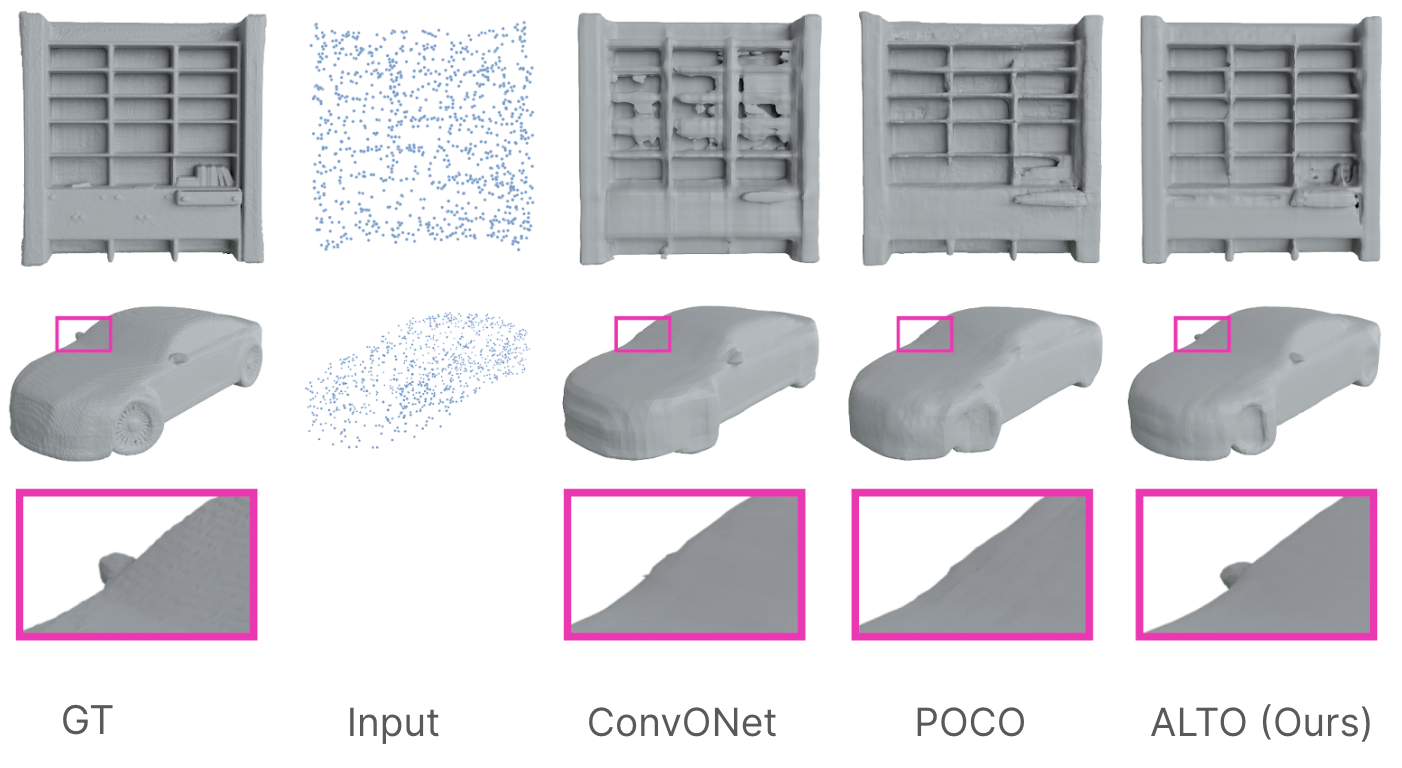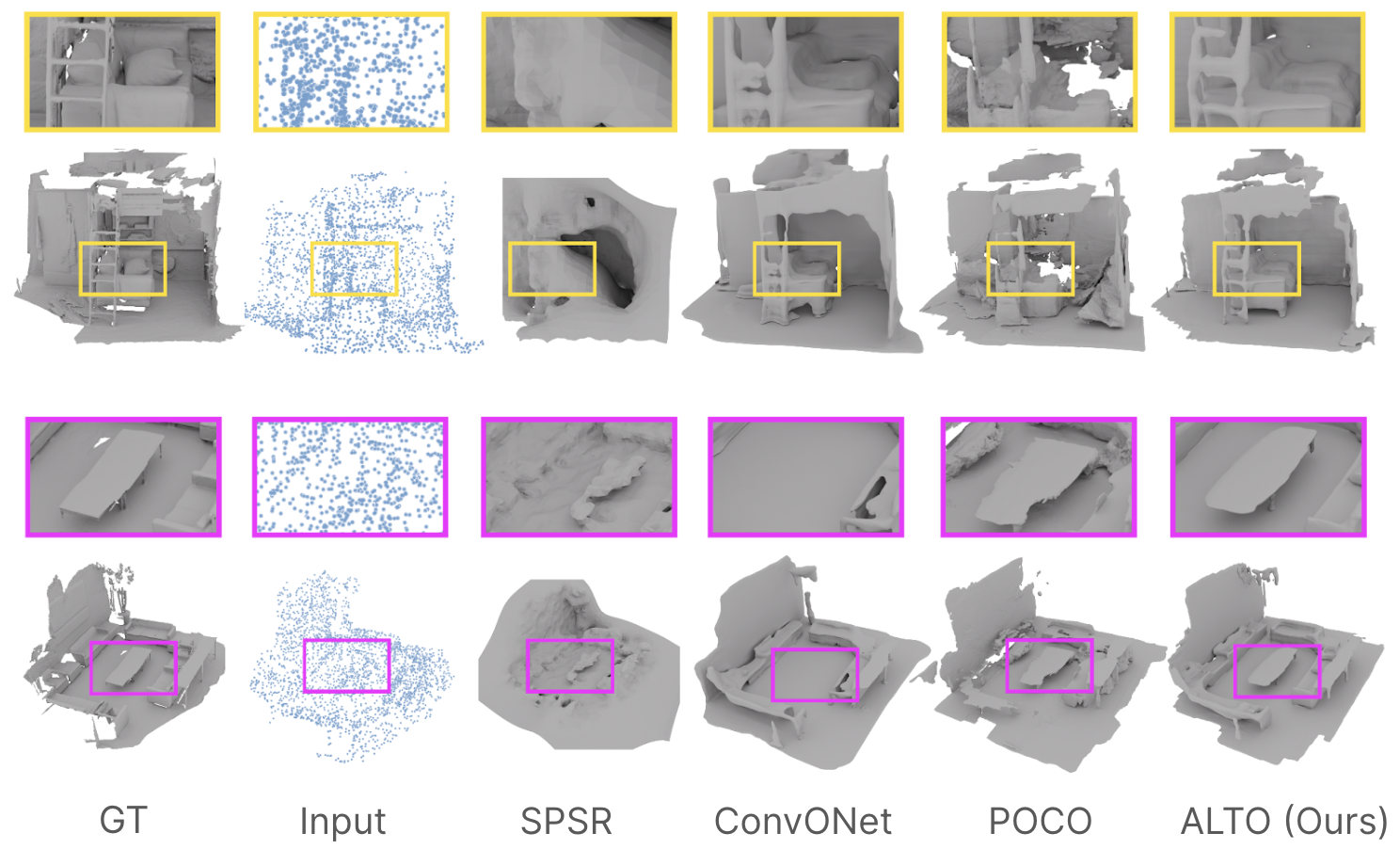ALTO: Alternating Latent Topologies for Implicit 3D Reconstruction
Zhen Wang*1 Shijie Zhou*1 Jeong Joon Park2 Despoina Paschalidou2 Suya You3 Gordon Wetzstein2 Leonidas Guibas2 Achuta Kadambi1
University of California, Los Angeles1 Stanford University2 US Army Research Laboratory3
CVPR 2023, Vancouver
Rethinking latent topologies for fast and detailed implicit 3D reconstructions. Recent work (POCO CVPR’22) has used latent encodings for each point to preserve 3D detail. We introduce ALTO, which can alternate between latent topologies like grid latents and point latents to speed up inference and recover more detail, like the 3D reconstruction of a thin lamp-post.



